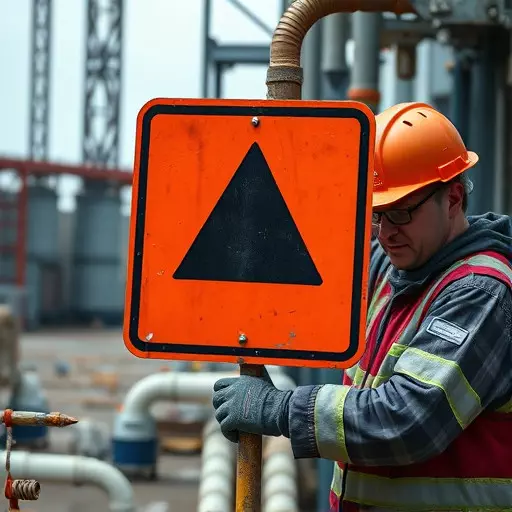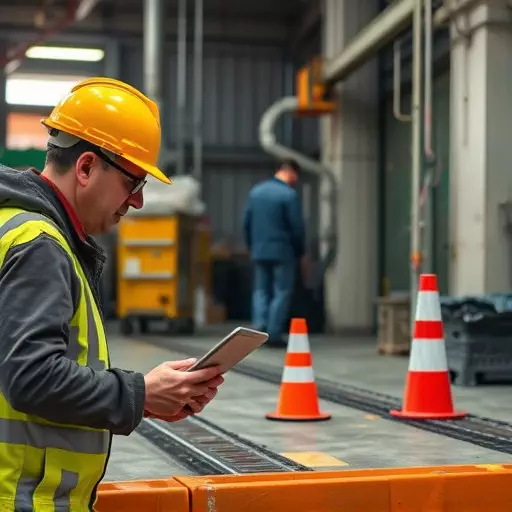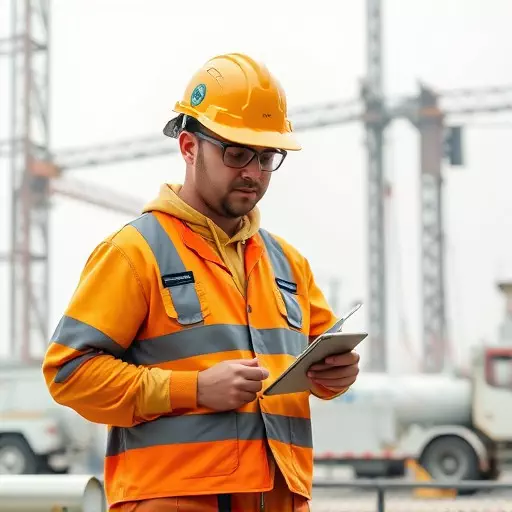Workplace Risk Assessments are essential for modern occupational safety, going beyond identification by analyzing likelihood and consequences. Businesses must stay updated on the latest occupational safety news to manage emerging hazards like cybersecurity threats, mental health issues, and ergonomic problems from remote work. Comprehensive risk assessments consider all workplace aspects, enabling tailored control measures and proactive safety cultures. Regular inspections, adhering to regulations, and incorporating industry standards are crucial steps in identifying and mitigating potential risks. Effective safety management systems that include regular assessments, clear communication, and incident response protocols ensure worker well-being and organizational competitiveness.
Workplace risk assessments are an essential pillar of modern occupational safety, crucial for identifying and mitigating potential dangers. In today’s dynamic work environment, staying abreast of the latest occupational safety news is vital to incorporate emerging hazard insights into risk assessment strategies. This comprehensive overview delves into key aspects such as understanding risk assessments, integrating safety management systems, and conducting thorough worksite inspections. Additionally, it explores the role of the latest industry developments in identifying and addressing emerging occupational hazards, emphasizing best practices for regular risk evaluations.
- Understanding Workplace Risk Assessments: A Comprehensive Overview
- The Role of Latest Occupational Safety News in Modern Risk Assessment
- Unveiling Emerging Occupational Hazards: What Every Business Should Know
- Integrating Safety Management Systems for Effective Risk Mitigation
- Practical Steps for Conducting Thorough Worksite Inspections
- Legal Obligations and Best Practices for Regular Risk Assessments
Understanding Workplace Risk Assessments: A Comprehensive Overview

Workplace Risk Assessments are an essential component of modern occupational safety practices, designed to identify and mitigate potential hazards in the workplace. It’s a process that goes beyond simply identifying risks; it involves analyzing each risk’s likelihood and consequence, enabling businesses to prioritize their safety efforts effectively. By integrating emerging occupational hazards and incorporating them into safety management systems, organizations can stay ahead of industry trends and ensure compliance with the latest occupational safety news.
Comprehensive risk assessments involve a systematic examination of all aspects of the workplace, from physical structures to equipment operation, and even employee interactions. This proactive approach allows for the implementation of tailored control measures, ensuring that risks are managed before they escalate into incidents. Staying updated on emerging hazards is crucial, as new technologies and work processes can introduce unforeseen risks, requiring adaptable safety management strategies.
The Role of Latest Occupational Safety News in Modern Risk Assessment

In today’s rapidly evolving work environment, staying abreast of the latest occupational safety news is more critical than ever for effective risk assessment practices. Emerging occupational hazards, from ergonomic issues related to remote work to the risks associated with new technologies, demand constant updates to safety management systems. Professionals in charge of workplace risk assessments must integrate the newest research and trends into their strategies to ensure comprehensive protection for employees.
The latest occupational safety news plays a pivotal role in identifying these emerging threats, providing valuable insights into best practices for mitigation. By staying informed, organizations can adapt their risk assessment protocols, implement tailored safety measures, and foster a proactive culture that prioritizes worker well-being. This continuous learning approach not only enhances the accuracy of risk assessments but also strengthens overall safety management systems.
Unveiling Emerging Occupational Hazards: What Every Business Should Know

In today’s rapidly evolving work environment, businesses must remain vigilant in identifying and addressing emerging occupational hazards. The latest occupational safety news highlights a shift in risks, with new challenges arising from technological advancements, changing job roles, and an increasingly diverse workforce. From cybersecurity threats to mental health concerns, these modern hazards demand proactive attention. Effective safety management systems are no longer just about adhering to regulations; they involve staying ahead of trends and adapting to keep employees secure.
Businesses should invest in comprehensive risk assessments that go beyond traditional dangers. This includes analyzing emerging risks such as ergonomic issues related to remote work, the psychological impact of long hours, and the potential for cyberattacks targeting sensitive company data. By integrating these considerations into safety management systems, organizations can foster a culture of proactive safety, ensuring they remain competitive and responsible in the face of evolving occupational hazards.
Integrating Safety Management Systems for Effective Risk Mitigation

In today’s dynamic work environment, keeping up with the latest occupational safety news and emerging occupational hazards is paramount for any organisation. Integrating robust safety management systems (SMS) serves as a cornerstone in mitigating risks effectively. A comprehensive SMS doesn’t just identify potential dangers; it establishes structured processes to address them proactively.
This involves regular risk assessments, clear communication channels, and well-defined protocols for incident reporting and response. By adopting such systems, organisations can foster a culture of safety consciousness where prevention is always prioritised over reaction. This proactive approach not only complies with legal obligations but also translates into improved productivity, enhanced employee morale, and a positive reputation in the face of the ever-evolving workplace risk landscape.
Practical Steps for Conducting Thorough Worksite Inspections

Conducting thorough worksite inspections is a critical step in identifying and mitigating potential risks. Begin by reviewing relevant safety regulations and industry-specific standards to ensure compliance. Next, assemble a team of trained employees or consult with experts to conduct a systematic walk-through of the workspace. Utilise checklists tailored to your facility’s operations, focusing on common hazards such as slip/trip dangers, electrical risks, and noise exposure.
Encourage active participation from all staff members during these inspections. Their insights can reveal emerging occupational hazards not immediately apparent to management. Document every observation meticulously, including photos and notes. This data will inform the development or enhancement of your safety management systems, ensuring the latest occupational safety news is incorporated into your risk assessment strategies.
Legal Obligations and Best Practices for Regular Risk Assessments

In today’s dynamic work environment, staying ahead of workplace risks is not just a best practice—it’s a legal obligation. Employers are mandated to conduct regular risk assessments as part of their commitment to ensuring employee safety and adherence to the latest occupational safety news. This process involves identifying potential hazards, evaluating their likelihood and severity, and implementing appropriate controls, as per the guidelines set by relevant health and safety authorities.
Beyond legal requirements, embracing best practices in risk assessment is a strategic move for any organization. It fosters a proactive culture of safety, enabling businesses to stay agile in the face of emerging occupational hazards. A robust safety management system integrates risk assessments into daily operations, fostering a dynamic environment where worker well-being remains a top priority.


